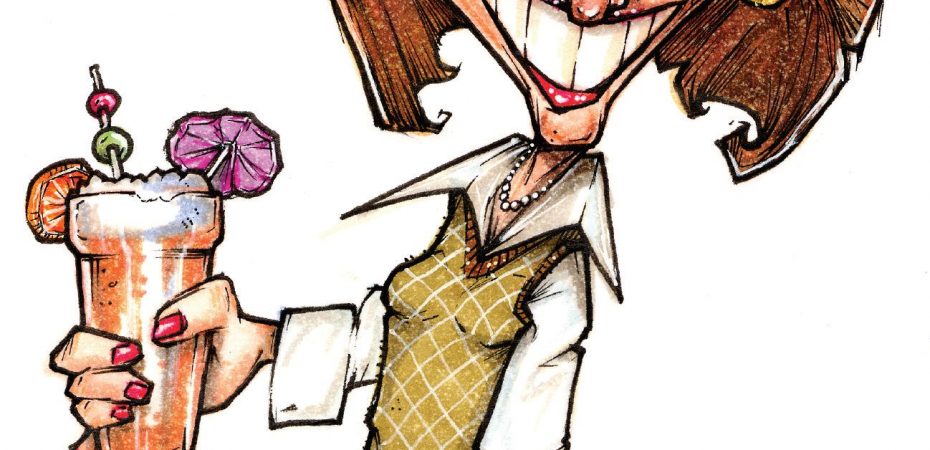It’s been an odd time in the world of brewing recently, there have been beers launched specifically for women and complaints made about labels being sexually suggestive – as if that’s anything new when people are marketing products, has anyone watched MTV recently?
Actually, if you go back in time, beer has always been marketed rather lewdly. Those naughty Mesopotamians were fond of carvings of bare-breasted beauties on the outside of their watering holes and, as Pete Brown points out in his book A Man Walks into a Pub, they had some pretty nifty ad slogans as well, such as: ‘Drink Ebla – the beer with the heart of the lion.’
But have, or should, we have moved on by now? Well to a greater degree when it comes to alcohol advertising we have done. There are still the odd puerile advertisements – usually for big brewery brands who seem utterly determined to deter women from drinking beer – and while I’d happily see these taken off our television screens I’m also conscious that this is my opinion, and that there’s a danger you can take this sort of attitude too far.
For example, a member of Alcohol Concern, a UK government-funded organisation, decided to make a complaint to UK drinks watchdog, the Portman Group, about the labelling on Dorothy Goodbody’s Wholesome Stout, claiming that it was sexually suggestive and the buxom wench in question was clearly not wearing any knickers.
Firstly I’d like to point out that this is a cartoon-style drawing, reminiscent of the cleaner paintings on WWII American bombers, and secondly I just can’t see it – and I’ve had a disturbingly close look!
Thank God the Portman Group has got some sort of perspective on reality and knocked back the complaint saying that the branding was merely ‘saucy’ and that the claim that the woman in the picture wasn’t wearing any undergarments was a case of ‘the complainant’s imagination getting the better of them.’
But it’s easy to go too far the other way as well, as proven by the recent launch of Harry’s Beer – a brew designed specifically to appeal to the woman drinker. This fem-ALE, as it has been dubbed, has been the subject of some criticism for failing its target market by pandering to the misguided opinion that somehow ‘girlies’ have different taste buds to blokes.
It’s not that the issue of beer rejectors amongst the female market doesn’t need addressing, but my opinion is that launching a brand that is deliberately aimed at women only further serves to alienate them from the rest of the beer market. It’s a bit like when I’m doing tutored beer tastings, so many people/idiots tell ask me why I don’t have a fruit beer on the menu in order to make sure the girls have something to drink, it takes all my self-control not to swear at them in a very unladylike manner.
Because, and this was proved once more at an event I hosted the other evening, women like beer, they just don’t know enough about it. The two young women in the room – mainly populated by middle-aged men – were very vociferous in their support of Flying Dog Classic Pale Ale, and were very keen to know more about it, where they could buy it, what other beers tasted like it and if they could get this in any pubs in London because they’d like to seek it out.
But had I served it in an ugly pint glass – instead of a wine glass – would they have been as keen to try it I wonder? Probably not, and this brings me full circle back to Harry’s Beer.
If you are going to launch a beer for women then aesthetics are always going to be important, and that most certainly does not mean creating a handled jug with a daisy on it as your branded glassware of choice.
I say this for two reasons, firstly because I don’t know a single woman who likes drinking out of a handled jug and, on the flipside, what bloke is going to drink out of a pint pot with petals on it?
It makes us no better as women to create a product that alienates the male market than it is for male marketers to produce sexist adverts.
What we should all be pulling together to do is educate all walks of life about the amazing complexities of beer in all its many varied and marvellous forms – and by us all I mean readers of this magazine, brand owners and brewers because we all have a role to play in enthusing friends, family, potential converts and die-hard rejectors that out there, somewhere, is a beer for them.
Article is from Issue 18 of Beers of the World Magazine

